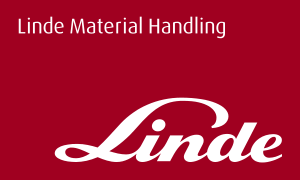Complete system for lithium-ion technology
Linde Material Handling develops trucks equipped with lithium-ion batteries
The latest update from the World of Material Handling: Linde Material Handling (MH) is incorporating the first warehouse technology trucks to feature lithium-ion batteries into its product portfolio. As an initial step, the Linde T16 to T20 pedestrian pallet trucks will be available to order with a load capacity of between 1.6 and 2.0 tonnes from September. The special feature of the solution from Linde is that the truck (including the truck control unit and electronics), battery and charger come together to form a complete system, the various components of which communicate via CAN bus. This set-up makes it possible to harness the full potential of the system in terms of performance, and capitalise on all of the benefits offered by the new battery technology. In turn, this leads to considerable reductions in energy costs and increasing levels of productivity. At the same time, thanks to a series of precise adjustments and fine-tuning, the system complies with even the most stringent safety requirements.

- As an initial step, the Linde T16 to T20 pedestrian pallet trucks will be available to order with lithium-ion batteries. The special feature of the solution from Linde is that the truck (including the truck control unit and electronics), battery and charger come together to form a complete system.
Out of all the alternative drive types available, lithium-ion technology presents the most opportunities in the short term. What’s more, it is expected that the segment for electrically powered industrial trucks will see a further boost in popularity as a result of this technology. After all, unlike the lead-acid batteries used previously—which are particularly limiting when it comes to multi-shift use or applications that require significant amounts of energy—lithium-ion batteries boast an extremely high volumetric energy density. With lithium-ion batteries, twice the amount of useful energy can be stored in the same battery tray. In turn, this enables the truck to be operated for two shifts instead of just one, providing that staff use breaks as opportunities for interim charging. By taking this approach, companies operating industrial trucks are able to save time and costs associated with replacing batteries—as was required previously—without having to worry about reducing the battery service life through the interim charging process. Plus, equipment that previously needed to be kept for replacing batteries—such as a replacement frame with roller channel—are no longer required. The same is true of the areas in warehouses that had to be accordingly allocated for this purpose; this space can now be put to other use. What’s more, lithium-ion batteries are significantly quicker to charge, and do not require topping up or an equalising charge after the actual charging process itself in order to protect the battery. This also saves time and energy. Last but not least, intelligent battery chargers that engage with one another open up new means of managing and optimising battery pools, and ensure maximum availability while reducing costs for energy and handling.
The market launch of the warehouse technology trucks featuring the innovative battery technology will take place in two stages. The roll-out will start with the Linde T16 to T20 pedestrian pallet trucks, which are equipped with an 86-Ah battery. What’s more, this voltage is delivered evenly over the entire operating period, right the way through until shortly before the battery reaches discharge status. The battery is fully charged in an hour and a half, and as much as 60% charged within 30 minutes. At 1.97 kWh, the installed capacity of the traction motor is clearly above the previous unit that was fitted as standard.
The second stage is planned for early 2015 and will see other trucks brought onto the market. These include the Linde T16 to T20 pedestrian pallet trucks with increased battery capacity, the Linde T20 to T24 AP/SP pallet trucks with driver’s standing platform, the Linde N20 and N20 HP low-lift order pickers, and the Linde P30C and P50C tow tractors. All of these trucks are equipped with batteries offering 210 Ah or 550 Ah and an installed capacity of 3.93 kWh or 10.58 kWh.
The integrated battery management system ensures that the lithium-ion battery does not become deep discharged or overloaded. This system monitors the condition of the battery cells on an ongoing basis and protects against misuse. The display is used to present the driver with information on the general condition of the battery, the battery’s charging state and the remaining period of charge available. In addition, lithium-ion batteries achieve at least twice the number of cycles offered by lead batteries over their service life, and even considerably higher than this figure depending on use. These batteries also deliver better values when it comes to energy draw: Lithium-ion batteries can be up to 95% discharged without sustaining damage, whereas with lead batteries, this figure is only as high as 80%. Another benefit offered by the new battery technology is the lack of need for maintenance. Service tasks such as topping up water are not required. Even the problem of leaking battery gases and acids is a thing of the past.

